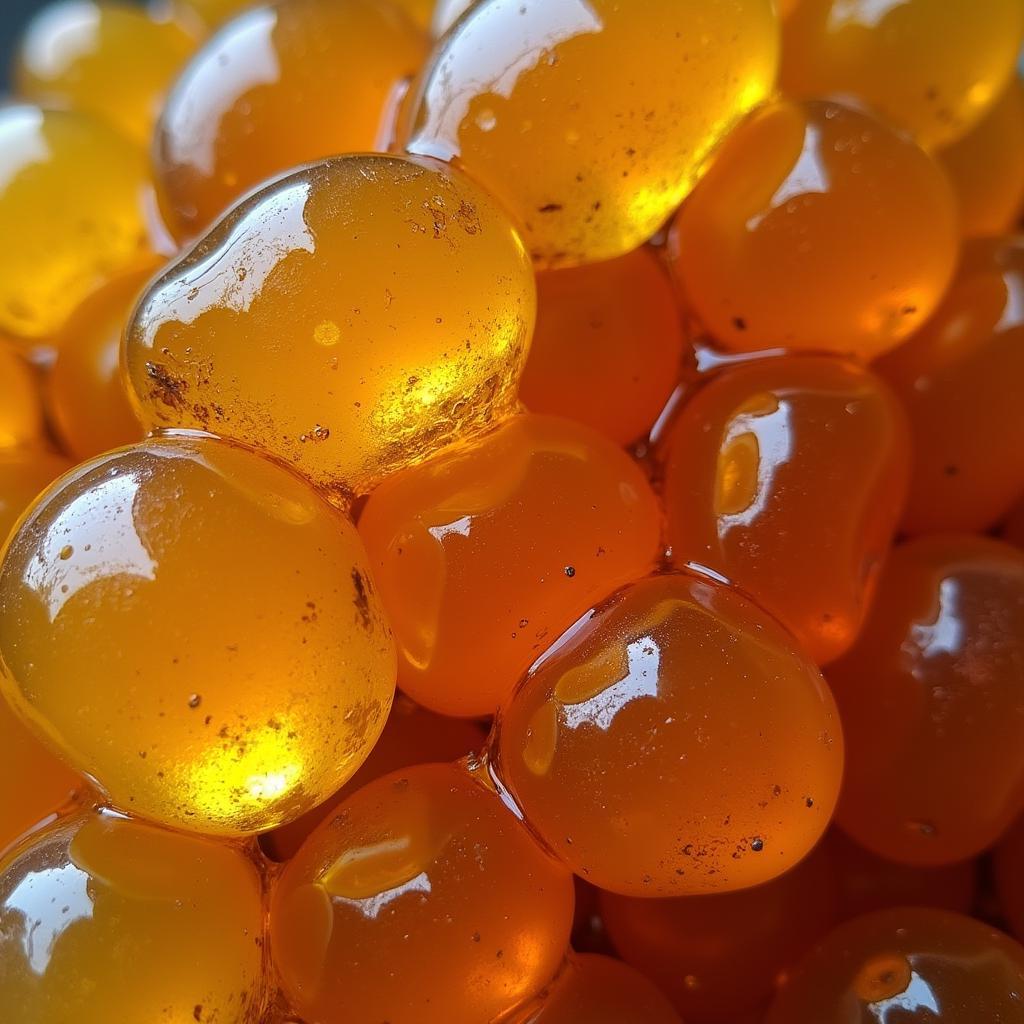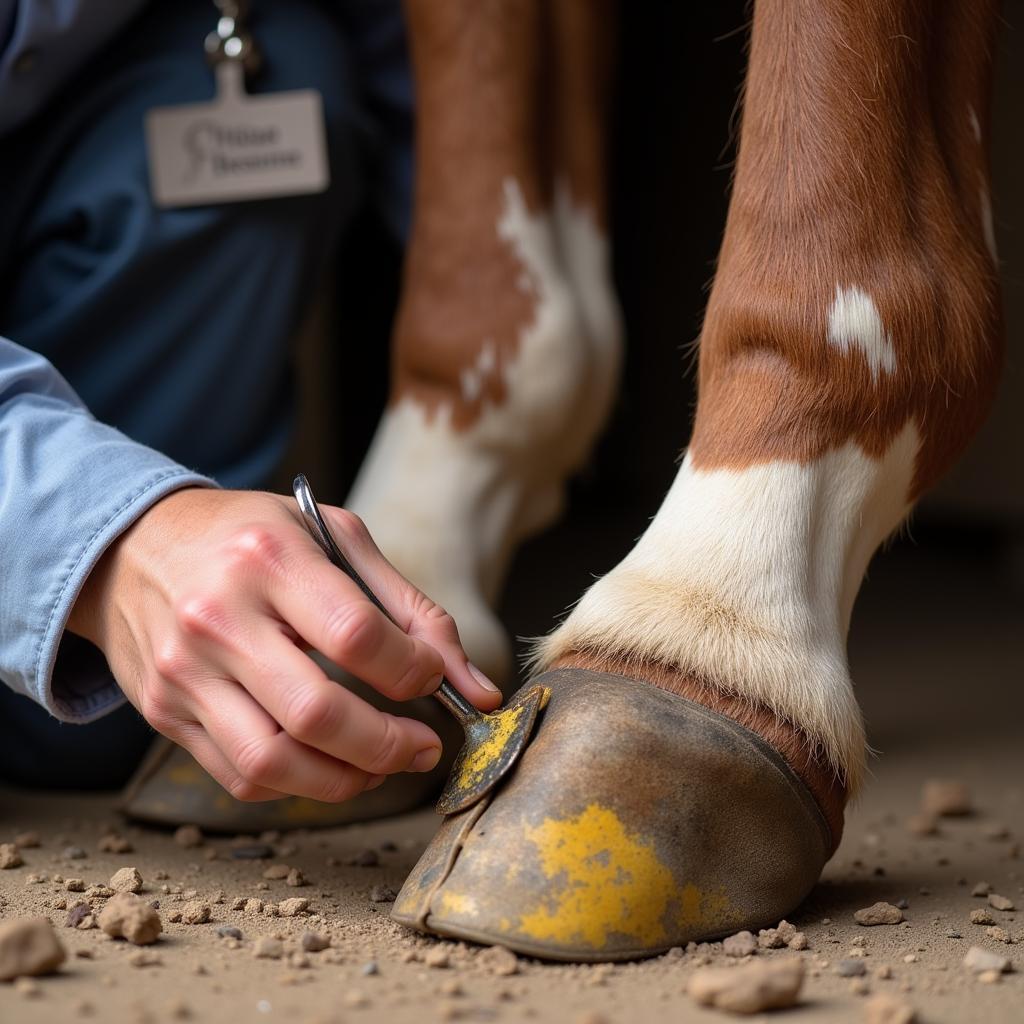Venice turpentine is a sticky, yellowish-brown resin derived from the larch tree (Larix decidua). It has been used for centuries in traditional medicine for its purported healing properties. In recent years, venice turpentine has gained popularity as a natural remedy for various equine ailments. However, its efficacy and safety remain a topic of debate among veterinarians and horse owners. This comprehensive guide delves into the uses, benefits, and risks of venice turpentine for horses, providing you with the information you need to make informed decisions about your horse’s health.
 Close-up of venice turpentine resin
Close-up of venice turpentine resin
Traditional Uses of Venice Turpentine in Horses
Venice turpentine has traditionally been used in horses to address a range of conditions, primarily related to hoof care and respiratory health. It is often touted for its antiseptic, expectorant, and wound-healing properties. Some common uses include:
- Hoof care: Applied topically to treat thrush, abscesses, and cracks. It is believed to create a protective barrier, promote healing, and prevent infection.
- Respiratory issues: Administered orally to alleviate coughs, congestion, and other respiratory symptoms. Its expectorant properties are thought to help clear mucus from the airways.
- Wound healing: Used as a topical application on minor wounds, cuts, and abrasions to prevent infection and promote healing.
 Applying Venice Turpentine to a Horse's Hoof
Applying Venice Turpentine to a Horse's Hoof
Potential Benefits and Scientific Evidence
While anecdotal evidence supports some of the traditional uses of venice turpentine for horses, scientific research on its efficacy and safety is limited. Most studies have been conducted on small sample sizes or in laboratory settings, making it difficult to draw definitive conclusions.
Some studies have shown that venice turpentine possesses antimicrobial properties against certain bacteria and fungi, which could explain its purported benefits in treating thrush and other infections. However, more research is needed to confirm these findings and determine its effectiveness in clinical settings.
Risks and Considerations
Despite its long history of use, venice turpentine is not without risks. It is crucial to consult with a veterinarian before administering venice turpentine to your horse, as it can interact with certain medications and may not be suitable for all horses.
Potential side effects of venice turpentine include:
- Skin irritation: Topical application can cause skin irritation, redness, and itching in some horses.
- Gastrointestinal upset: Oral administration may lead to digestive issues such as diarrhea, colic, or loss of appetite.
- Allergic reactions: Some horses may experience allergic reactions to venice turpentine, ranging from mild skin rashes to severe anaphylactic shock.
 Veterinarian Examining a Horse Before Treatment
Veterinarian Examining a Horse Before Treatment
Conclusion
Venice turpentine has a long history of use in traditional equine medicine, particularly for hoof care and respiratory issues. While anecdotal evidence suggests potential benefits, scientific research is limited. It is essential to consult with a veterinarian before administering venice turpentine to your horse to discuss potential risks, benefits, and alternative treatment options.
Remember, your horse’s health and well-being are paramount. Always prioritize professional veterinary advice and evidence-based practices.
FAQs
1. Can I use venice turpentine on my pregnant mare?
It is not recommended to use venice turpentine on pregnant mares without consulting a veterinarian. The safety of venice turpentine during pregnancy has not been established.
2. How do I store venice turpentine?
Store venice turpentine in a cool, dark place, away from direct sunlight and heat. Keep it tightly sealed to prevent evaporation.
3. Can I mix venice turpentine with other hoof treatments?
It is best to avoid mixing venice turpentine with other hoof treatments unless advised by a veterinarian. Some combinations may interact and cause adverse effects.
4. How long does it take for venice turpentine to work?
The time it takes for venice turpentine to work can vary depending on the condition being treated and individual horse factors. Consult with your veterinarian for specific guidance.
5. What should I do if my horse has an adverse reaction to venice turpentine?
If your horse exhibits any signs of an adverse reaction, such as skin irritation, digestive upset, or respiratory distress, discontinue use immediately and contact your veterinarian.
Need Help?
If you need assistance with your horse’s health or have any questions regarding venice turpentine, please don’t hesitate to contact our team of equine experts.
Phone: 0772127271
Email: [email protected]
Address: QGM2+WX2, Vị Trung, Vị Thuỷ, Hậu Giang, Việt Nam
Our dedicated customer care team is available 24/7 to assist you.